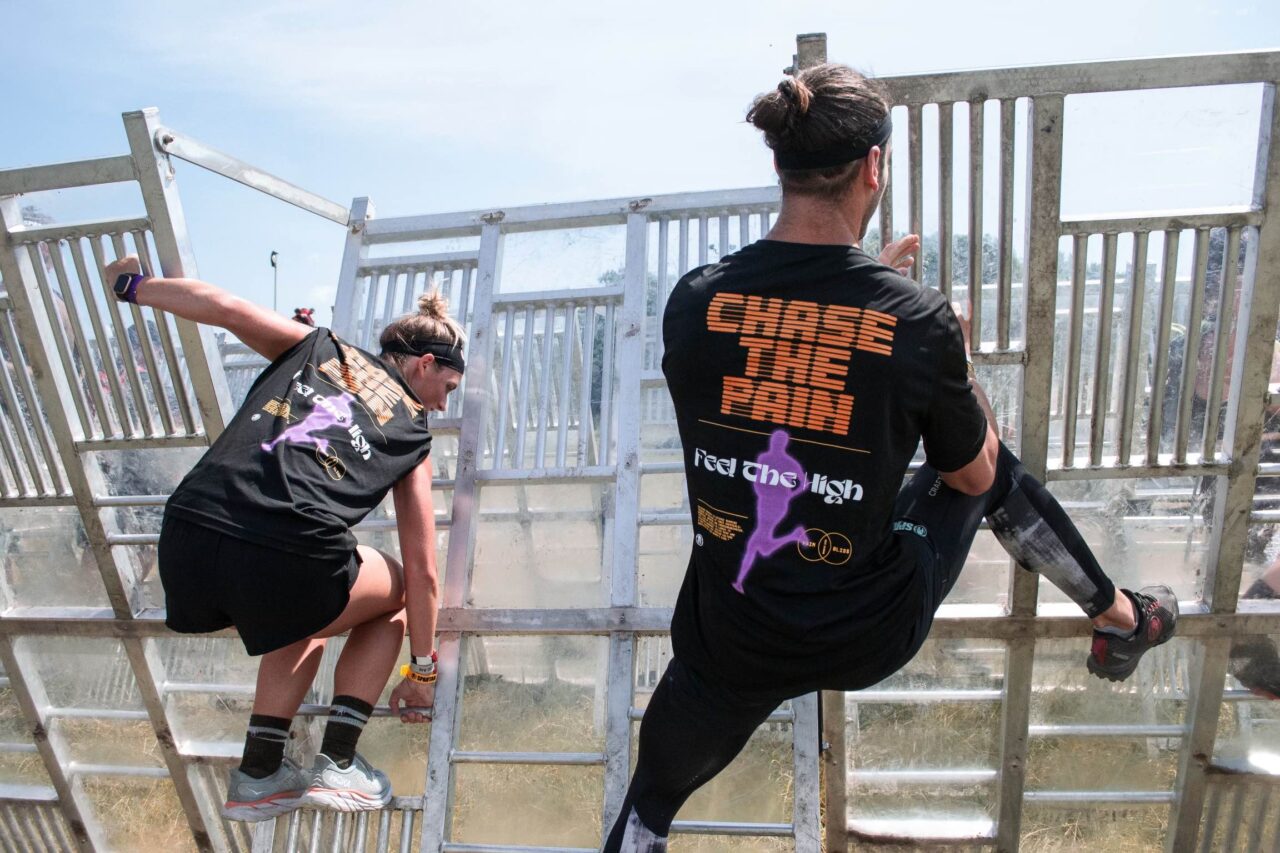For first-time obstacle course racers, nothing will ever compare to getting out there and practicing on the actual obstacles themselves. That’s where you’ll truly learn the technical skills, bodily control, and the muscular demands to get them done. The ideal situation — if you ever plan to get competitive — is to be out there consistently doing as much race simulation as possible, both logging miles on the trails and performing the obstacles.
However, if you’ve signed up for your first Spartan race, haven’t raced in a long time, or don’t have much time to train (but still want to beat your friends or coworkers), here are the best exercises for the hardest obstacles you’ll face in on the course.
Related: The Best Workout Plan for Your First Obstacle Course Race
View this post on Instagram
The Rope Climb Obstacle
Contrary to what you might think, the Rope Climb is a full-body exercise — not just an upper-body one. Why? The pros know that to be as efficient as possible while climbing, you should be practicing a J or S hook. These are technical skills that involve wrapping your feet around the rope, enabling you to save your arms while leveraging your legs to support and power you up. Definitely practice the leg hooks, but make sure those arms and legs are strong as well with the following exercises.
- Squat
- Tuck Jump
- Dead Hang, Pull-up, or Inverted Row
- Pull-Down
- Reverse Curls
The squats will strengthen your legs, the tuck jumps will enhance your lower-body power, the dead hangs, pull-ups, inverted rows, and pulldowns will improve your upper-body vertical pulling strength, and the reverse curls will strengthen your forearms.
The Atlas Stone Obstacle
The Atlas Stone is a bend and lift. You’ll have to really turn on all of the muscles in your core and use a lot of your legs to save your back. Then, rely on your arms to do some carrying.
- Plank
- Side Plank
- Sit-Up or Hollow Hold
- Weighted Front-Rack Carry
- Sumo Deadlift
The plank, side plank, and sit-up (or hollow hold) will develop your core strength from multiple angles, the weighted front-rack carry will also strengthen your core, legs, and shoulders. The sumo deadlift will strengthen your back, glutes, and hamstrings.
The Olympus Wall Obstacle
The Olympus Wall is awkward as hell. Age Group winners and Elites alike say that there seems to be a few different ways to do this one efficiently. But either way, your legs, arms, and grip will be truly tested. No matter how well-trained you are, when it comes to race day, you can only pray that no one from the Spartan Media Team is capturing any photographic evidence of your attempt to traverse this often burpee-inducing obstacle.
- Isometric Squat Hold
- Plate Pinches
- Dead Hang
The isometric squat hold will simulate what it would be like to prop yourself up with your feet into the Olympus Wall, and the plate pinches will improve your grip strength by taxing the small muscles in your fingers along with your forearms. Similarly to the plate pinches, the dead hang will improve your grip strength while also strengthening your shoulders and back.
The Sandbag or Bucket Carry Obstacle
The Sandbag and Bucket Carry are at about equal suck level, depending on who you ask. While the Atlas Stone is heavy, it’s a relatively quick challenge in comparison to the slow and painful slog of the Sandbag and/or Bucket Carry. Again, this is another obstacle with different techniques depending on personal preference, but you’ll want to build as much strength and muscular endurance in your legs as possible.
- Squats
- Lunges
- Weighted Step-Ups
- Weighted Incline Walk
The squats and lunges will strengthen all areas of your legs while the weighted step ups and weighted incline walks will simulate the muscular demands of an uphill carry.
The Barbed Wire Crawl Obstacle
The Barbed Wire Crawl is sneakily tough. How tough can crawling be? Well, very, especially when you need to stay low enough not to slice yourself open. (And when it’s anything further than about 10 or 15 feet … and up a hill.)
Your core, legs, forearms, and shoulders will be burning like hell the whole way.
- Bear Crawl
- Crab Crawl
- 90s Stretch
- Pigeon Pose
- Burpees
The bear crawl is a perfect simulation of the Barbed Wire Crawl obstacle. It will strengthen your core, legs, and shoulders. Flipping over and crab crawling will counterbalance the bear crawl by strengthening the opposing muscles. This will eliminate any weaknesses or imbalances. The 90s stretch and pigeon pose will improve your hip mobility in the event that you need to get even lower to the ground at certain points. What purpose do the burpees serve? To race fast, you need to train fast.

